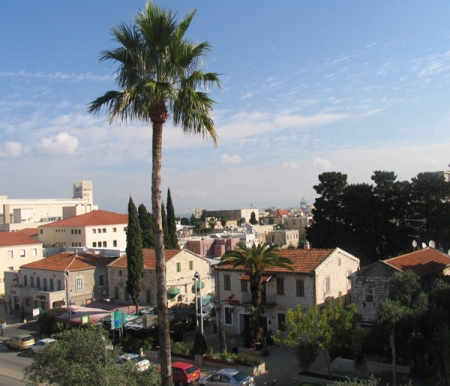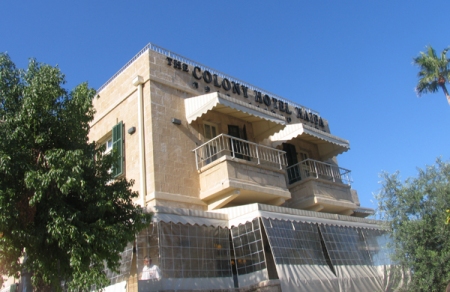Five days before Passover, minds and bodies bend to the approaching festival: ritual cleaning, massive food shopping, gargantuan feats of cooking. In Israel, this seven-day holiday is followed in quick succession by the Mimouna (a North African Jewish holiday that has been adopted by nearly all the country’s ethnic groups), Holocaust Martyrs and Heroes Remembrance Day, Memorial Day for Israel’s Fallen and Victims of Terror, and Independence Day. Hardly a shortage of festivals and days of national solidarity.
But for some, these are just not enough. Last week, a visitor to the West Bank could witness a Jewish-nationalist holiday in the making. The site is Qasr al-Yahud, the part of the Jordan River near Jericho where tradition says Jesus was baptized by John the Baptist (Matthew: 3:13-17). At this very site to which Jewish tradition also lays claim, several miraculous events took place. On the tenth day of Nisan, that is, five days before Passover Eve, the waters of the Jordan parted miraculously to allow the Children of Israel to enter the Promised Land (Joshua 3: 14–17). And it was here that the waters parted so that the prophets Elijah and Elisha could cross on dry land, before Elijah ascended to heaven in a fiery chariot (2 Kings 2: 6–10).
Like so many religious sites in the Holy Land, this one belongs to the Greek Orthodox Church, but monasteries and churches of various denominations dot the landscape. Israel administers the site under its Parks and Nature Authority, with a shop that sells bottled Jordan water and white gowns for those who want to follow in the footsteps of Jesus and be baptized in the river.
The border between the Israeli-controlled West Bank and Jordan runs through the middle of the river; Israeli soldiers provide security on the western side while their Jordanian counterparts patrol the eastern side, and on both sides busloads of pilgrims arrive in a steady stream. Israeli sources say there were 750,000 visitors last year on the Israeli-controlled side and that they look forward to having 2 million visitors annually in the future.
According to one source, the name of the site, Qasr al-Yahud (in Arabic, Palace of the Jews) derives from a name given to the Church of John the Baptist there because of its splendor. Another explanation is that this name is a corruption of the Arabic Kasser, meaning “breaking,” a reference to the parting of the waters for the crossing of the Children of Israel.
Maj.-Gen. (res) Uzi Dayan, now a Likud member of Knesset, and his like-minded friends take credit for organizing the celebration of a Jewish/national holiday at Qasr al-Yahud. This year they brought in 17 busloads of Jews from all over the country to mark the tenth of Nisan, with an emphasis (repeated many times) on the land that God gave the Children of Israel, repeated especially by the keynote speaker, former Ashkenazi chief rabbi of Israel, Israel Meir Lau. Next year Dayan’s group plans to bring more. There was no explanation of where the money for the buses came from.
The busloads also visited nearby Jericho—which Israel has closed to its citizens except for this one day a year—to see the mosaic floor of a seventh–eighth-century CE synagogue and to see the walls that came tumbling down (accompanied by an ingenious explanation of the location of those walls—which most archaeologists agree have never been found).
Jericho is considered a “quiet” West Bank town, but this incursion did not sit well with all the residents. As we were leaving, a few children flung stones at our armored bus, hard enough to damage one of the windows.
Perhaps that was proof, if any more was needed for this audience, that Israel should annex the West Bank.
My visit to Qasr al-Yahud and Jericho was provided by the Government Press Office.
Text copyright 2019 by Esther Hecht. No part of the text may be used without written permission of the author.






